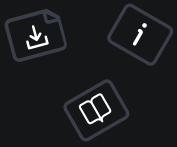Collections
Overview
The Collection class in Flight is a handy utility for managing sets of data. It lets you access and manipulate data using both array and object notation, making your code cleaner and more flexible.
Understanding
A Collection is basically a wrapper around an array, but with some extra powers. You can use it like an array, loop over it, count its items, and even access items as if they were object properties. This is especially useful when you want to pass around structured data in your app, or when you want to make your code a bit more readable.
Collections implement several PHP interfaces:
ArrayAccess(so you can use array syntax)Iterator(so you can loop withforeach)Countable(so you can usecount())JsonSerializable(so you can easily convert to JSON)
Basic Usage
Creating a Collection
You can create a collection by simply passing an array to its constructor:
use flight\util\Collection;
$data = [
'name' => 'Flight',
'version' => 3,
'features' => ['routing', 'views', 'extending']
];
$collection = new Collection($data);Accessing Items
You can access items using either array or object notation:
// Array notation
echo $collection['name']; // Output: FlightPHP
// Object notation
echo $collection->version; // Output: 3If you try to access a key that doesn't exist, you'll get null instead of an error.
Setting Items
You can set items using either notation as well:
// Array notation
$collection['author'] = 'Mike Cao';
// Object notation
$collection->license = 'MIT';Checking and Removing Items
Check if an item exists:
if (isset($collection['name'])) {
// Do something
}
if (isset($collection->version)) {
// Do something
}Remove an item:
unset($collection['author']);
unset($collection->license);Iterating Over a Collection
Collections are iterable, so you can use them in a foreach loop:
foreach ($collection as $key => $value) {
echo "$key: $value\n";
}Counting Items
You can count the number of items in a collection:
echo count($collection); // Output: 4Getting All Keys or Data
Get all keys:
$keys = $collection->keys(); // ['name', 'version', 'features', 'license']Get all data as an array:
$data = $collection->getData();JSON Serialization
Collections can be easily converted to JSON:
echo json_encode($collection);
// Output: {"name":"FlightPHP","version":3,"features":["routing","views","extending"],"license":"MIT"}Advanced Usage
You can replace the internal data array entirely if needed:
$collection->setData(['foo' => 'bar']);Collections are especially useful when you want to pass structured data between components, or when you want to provide a more object-oriented interface to array data.
See Also
- Requests - Learn how to handle HTTP requests and how collections can be used to manage request data.
- PDO Wrapper - Learn how to use the PDO wrapper in Flight and how collections can be used to manage database results.
Troubleshooting
- If you try to access a key that doesn't exist, you'll get
nullinstead of an error. - Remember that collections are not recursive: nested arrays are not automatically converted to collections.
- If you need to reset the collection, use
$collection->clear()or$collection->setData([]).
Changelog
- v3.0 - Improved type hints and PHP 8+ support.
- v1.0 - Initial release of the Collection class.



